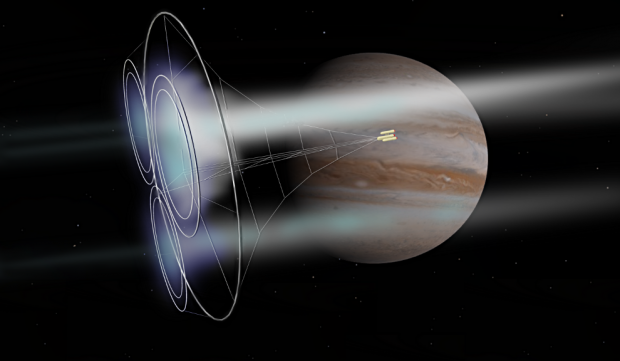
Breaking News
 The Fed's Pivot: The Return of Easy Money and the Inflation Storm Ahead
The Fed's Pivot: The Return of Easy Money and the Inflation Storm Ahead
 This One-Person eVTOL Will Soon Offer Bird's-eye Views of Las Vegas
This One-Person eVTOL Will Soon Offer Bird's-eye Views of Las Vegas
 Emergency Update: Steve Slepcevic Reports Live on Hurricane Melissa's Devastation in Jamaica
Emergency Update: Steve Slepcevic Reports Live on Hurricane Melissa's Devastation in Jamaica
Top Tech News
 Graphene Dream Becomes a Reality as Miracle Material Enters Production for Better Chips, Batteries
Graphene Dream Becomes a Reality as Miracle Material Enters Production for Better Chips, Batteries
 Virtual Fencing May Allow Thousands More Cattle to Be Ranched on Land Rather Than in Barns
Virtual Fencing May Allow Thousands More Cattle to Be Ranched on Land Rather Than in Barns
 Prominent Personalities Sign Letter Seeking Ban On 'Development Of Superintelligence'
Prominent Personalities Sign Letter Seeking Ban On 'Development Of Superintelligence'
 Why 'Mirror Life' Is Causing Some Genetic Scientists To Freak Out
Why 'Mirror Life' Is Causing Some Genetic Scientists To Freak Out
 Retina e-paper promises screens 'visually indistinguishable from reality'
Retina e-paper promises screens 'visually indistinguishable from reality'
 Scientists baffled as interstellar visitor appears to reverse thrust before vanishing behind the sun
Scientists baffled as interstellar visitor appears to reverse thrust before vanishing behind the sun
 Future of Satellite of Direct to Cellphone
Future of Satellite of Direct to Cellphone
 Amazon goes nuclear with new modular reactor plant
Amazon goes nuclear with new modular reactor plant
 China Is Making 800-Mile EV Batteries. Here's Why America Can't Have Them
China Is Making 800-Mile EV Batteries. Here's Why America Can't Have Them
Earth to Jupiter Via Magsail in 21 Days and Neptune in 18 Weeks

Nextbigfuture notes that the design looks very simple and achievable. If it works then by 2030s we would be able to mass produce probes by the thousands to explore the solar system and sending out telescopes to the gravitational lens point would give direct high-resolution imaging of exoplanets in thousands of solar systems.
The Plasma Magnet [PM] required relatively little energy and yet was capable of propelling a much larger mass at a velocity exceeding any current propulsion system, including advanced solar sails.
The Plasma Magnet was proposed by Slough. It arranges coils to use solar wind ions to induce a very large magnetosphere that is propelled by the solar wind. Unlike earlier proposals for magnetic sails that required a large electric coil kilometers in diameter to create the magnetic field, the induction of the solar wind ions to create the field meant that the structure was both low mass and that the size of the resulting magnetic field increased as the surrounding particle density declined. This allowed for a constant acceleration as the PM was propelled away from the sun, very different from solar sails and even magsails with fixed collecting areas.

 Handicapped America
Handicapped America China Innovates: Transforming Sand into Paper
China Innovates: Transforming Sand into Paper

